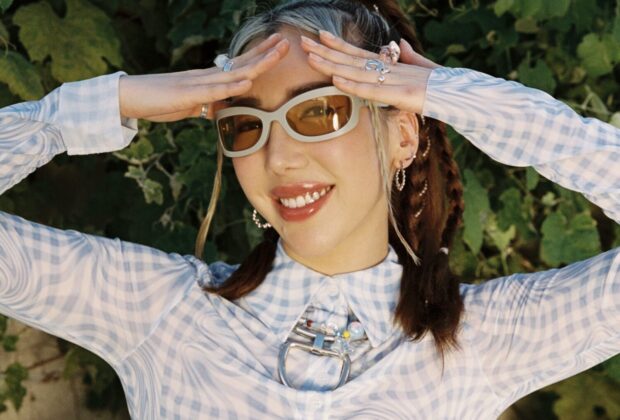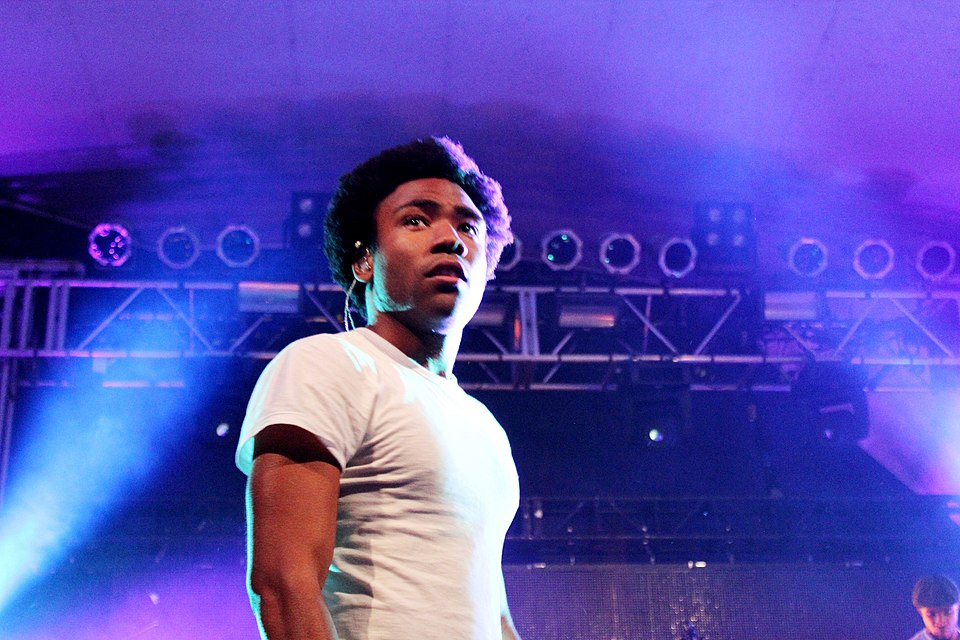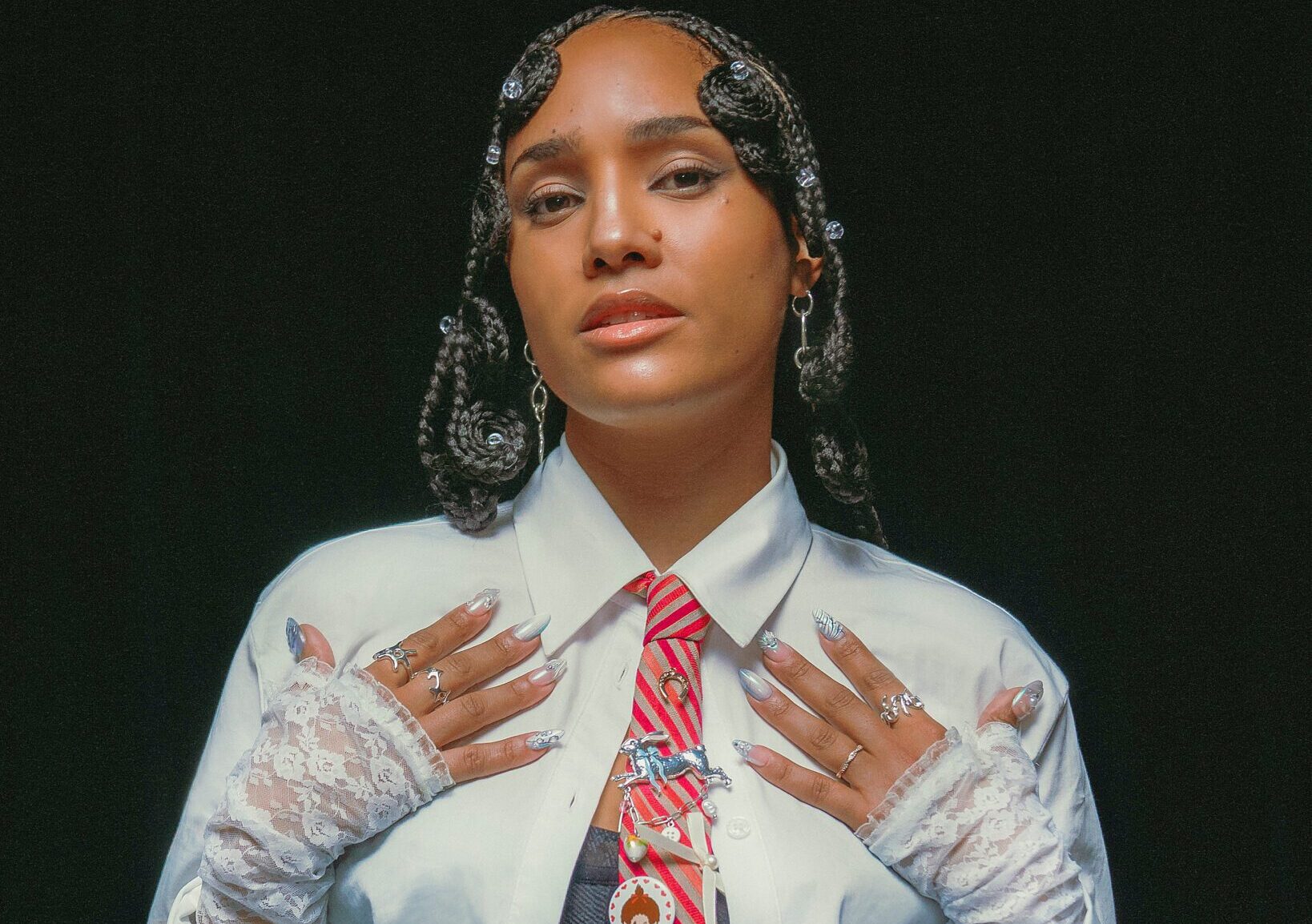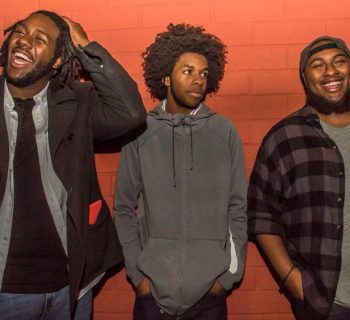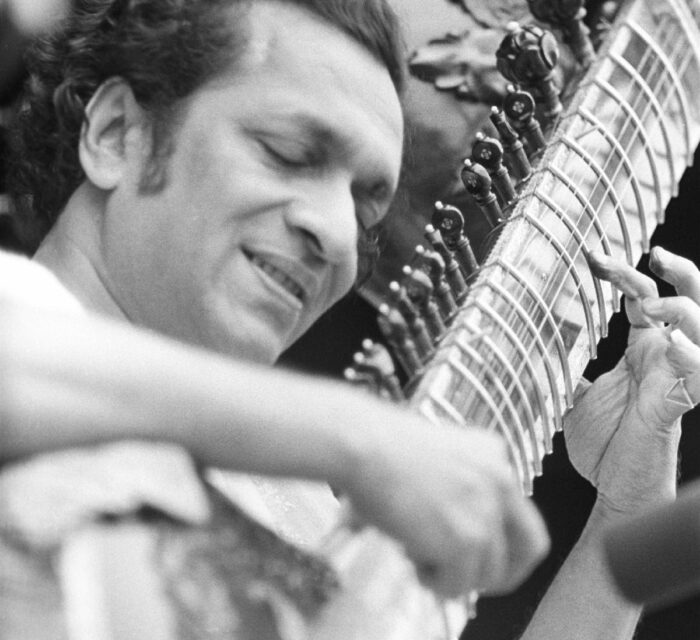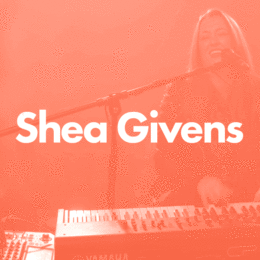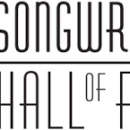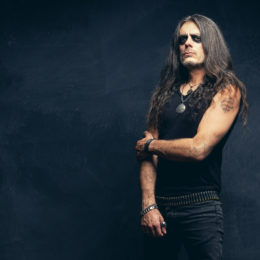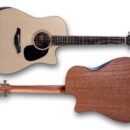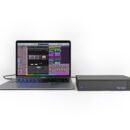Tokimonsta is an enigma. The electronic artist born Jennifer Lee is gleefully awkward to nail down genre-wise, primarily because she’s made it her business to blur and bend those boundaries with a sharp and open mind. The GRAMMY-nominated producer has, over the course of her 17-ish-year career, tapped into her listeners’ every emotion; she’s made them swell with joy and sway in a hypnosis-induced abandon. It’s been a journey, for them and her, and an incredibly rewarding one.
When performing, her focus is intense. Yes, she’ll play to the crowd when necessary—she certainly knows how to get a packed club bouncing when she wants to. But it’s really all about the music. That’s evident when listening to Eternal Reverie, her recently released opus.
There was a five-year gap between that and 2020’s Oasis Nocturno, during which Lee stepped away from music to take care of her best friend during her final days. That’s a profoundly life-altering experience for anyone to go through, and nobody would question her if the work that followed was overtly dark. Rather, Eternal Reverie evolved into a “tribute honoring her friend and the meaningful relationships that shape us all, with each track reflecting Tokimonsta's emotional and artistic journey during this poignant period,” according to a statement.
“This is the longest length of time I've had between putting out anything and also not touring,” Lee says. “So coming back, I was a little bit more apprehensive. There's always that concern. ‘Oh, did everyone forget about me?’ I haven't been very present on social media, and when the album came out, it's not like a different trajectory. I went full circle, and I really wanted to tap into my roots. I wasn't sure how people were going to feel about that too. But honestly, it's been so, so nice.”
There are songs on the new album, notably the single “Enjoy Your Life,” that are, at least on the surface, absolute bundles of joy. Lee says that any such vibe came about organically.
“It could be the nature of my approach that lent itself to be a tiny bit sunnier,” she says. “This album is a result of me actually feeling very disconnected from music. Just being in the industry part–it does get exhausting, and yet often you'll have people that are like, ‘I retire from music.’ How do you retire from music? What must have happened for you to be like, ‘I just don't want to do this anymore.’ From the beginning when I decided I wanted to do music, I wanted to make sure that music, my love for music, came first.”
The very same focus that we see during a Tokimonsta live set, the same attention to detail that we get from her recorded work, is evident in conversation. She’s open, friendly, and intensely likeable. When conducting this interview via Zoom on a Friday afternoon in early April, she even admits that we caught her on a “chatty day.” At the same time, it feels like every word she utters is carefully considered.
Behind her during the Zoom call, we can see a piano which she later clarifies is her “childhood piano” that she played when she was six years old at the urging of her parents.
“It wasn't my choice,” she says with a wry smile. “So, like many kids, it's your parents who are just like, ‘you should take piano lessons.’ The lessons themselves were less important than getting me in front of the piano. I mean, the lessons are also important. It's helpful to know how to play piano when you make music, but I discovered that I had my own voice in music. When I was growing up, my family had this running joke that I could never finish playing a piece from the start to the end. Mozart or Beethoven, I would just not play the whole thing. They attributed it to, I was not very good at piano. But why do I want to play the whole thing? This piece goes three pages, and I only like the first page of this music, and the rest is kind of garbage. And I decided that I just wanted to focus on playing the parts of this I thought were fun or that spoke to me.”
When Lee started experimenting with creating electronic music, that mentality paid off. While chopping and sampling, she was clear minded about what she did and didn’t like, what she wanted to use and what she left on the proverbial cutting room floor.
“I would also play my own melodies,” she says. “And I was in a household that didn't encourage that. They were like, ‘stop playing whatever you're playing. You need to play what your teacher told you to play.’ And through all that, I really pushed to be the person I am today. Like no one handed anything to me, no one encouraged. I didn't come in a family that's like, ‘let's celebrate you in the arts.’ I came from a family that's like, 'you need to be a doctor or a lawyer or do something that is worthwhile in this world, because we immigrated to this country for your being [Lee is second generation Korean American].’ So in order for me to be here today, I had to jump through hoops of fire.”
When she did start to veer towards electronic music and hip-hop, Los Angeles radio proved to be a magical source of inspiration.
“I discovered hip-hop—it was like Ice Cube and West Side Connection [Cube’s supergroup],” Lee says. “Dr. Dre—that's the stuff that was playing on the radio here, especially at that time. So I discovered how much I loved hip-hop, but at the same time on the same radio station, on Fridays and Saturday nights after 10 p.m., that's when the club music would go on. As I got older, I was in the era of Napster, just downloading music. I had no idea who these artists were, and I discovered artists like Aphex Twin, but also drum & bass artists like Goldie. And I also discovered that I really, really like house music, and early Detroit techno. I used to go raving when I was in high school, like, sneak out of the house. Don't tell my mom.”
The rave scene was inarguably infectious. Early events had a punk energy about them, driven by their novelty at the time. Older music listeners would claim that it wasn’t “proper” music, but for teens, it was “their music.”
“I’d go to raves when I was 15 or 16 years old,” Lee says. “And I was like, ‘wow, I fucking love this music and this energy.’ And it was across the board from going to the jungle gentleman bass room and going to the house room, and occasionally dabbling in techno, and maybe taking a step into happy hardcore, and then stepping back. But really, my love for electronic music was very much shaped by rave culture. Internet culture is what allowed me to discover other genres.”
That love for the music still shines through today, even if the new album was born out of an initial, understandable disconnect. With the pressure of a blossoming career weighing down, Lee decided to tap into her roots in order to rediscover her sonic identity.
“If I had to choose between having a healthy relationship with music and having a career in music, I would choose my healthy relationship with music,” she says. “And it was starting to get to a point where I needed to do something about it. I was like, back in 2009, 2010, who was Tokimonsta? I didn't know as much as I do now, and I wasn't as experienced, but I was still carefree, and there was no pressure, because it wasn't making money doing music. I was just so exuberant and happy to be out there sharing my music at that time. So when I approached this album, even though I was in a sort of jaded complex, I was like, ‘I don't want to be that. Who was I then?’ And tapping into that allowed me to make this album.”
Ultimately Lee says that the process of creating Eternal Reverie was a therapeutic one, reminding her that music can exude joyfulness while also being fun to create.
My love for electronic music was very much shaped by rave culture. Internet culture is what allowed me to discover other genres.
“It was really a very amazing process to be able to put this album together and be like, ‘Okay, let's work with some breaks, and let's work with some samples,’” she says. “And weirdly, at the end of the day, the album ended up also sounding very L.A. I remember someone from New York was like, ‘hey, this sounds like a very L.A. album' in the middle of winter, so obviously [it was] freezing there.”
It’s that unmistakable L.A. sunshine vibe that hammers home the idea that Tokimonsta was able to go back to the beginning, to the sheer love of creating the kind of music that she wanted to create, back when she was discovering the FruityLoops program (now called FL Studio).
“Once I got into college, a friend of mine started using this program called FruityLoops,” Lee says. “I think the entry level is a lot more user friendly. It's a lot of blocks. You know, it's set up like a drum machine, and I got very proficient at it. FruityLoops was a significant part of my musical journey up until like 2012. I still love it, you know, even though I've switched over to Ableton. But at that time, I was making music purely as a hobby. I didn't have any friends that were in a scene. I was in uni—I went to UC Irvine, which was in Orange County, very far away from any culture. I was a fan of making hip-hop beats, and I just made them nonstop, until one day I actually met a person who was like, ‘Hey, you should come to L.A., there's a bunch of other music producers and beat makers there,’ and we just go to nights and play beats.”
When asked to recall her first public set, Lee refers to L.A. “beat cyphers,” at Project Blowed in Leimert Park, where budding producers would show up with burned CDs and play their beats over a small PA system.
“Your beats could only be, like, 30 seconds long max, and you would just go and play it,” she says. “Everyone in that small room would just be like, ‘Wow, this is fire.’ People would take turns, and those were called beat cyphers, where you're going back and forth. That eventually did lead to things like, like beat invitationals and competitive beats. At that time, I was making music heavily rooted in hip-hop beats, until eventually I started incorporating more electronic elements, because I didn't work with rappers.”
While Lee has grown to love and respect the art of DJing, she considers herself a producer—a creator of electronic music—first and foremost.
“If I had to choose one, I would choose making music all day,” she says. “I don't know if it's weird to say this, but I think I'm better at making music than DJing. They're completely different skills. And that's why you have people that are excellent DJs. Excellent selectors don't necessarily make great music, or people that make your favorite songs, you go watch a set and you're like, ‘wow, they can't mix.’ So the good thing is, as a hobby and for learning, I really love the art of DJing. It allows me to express the selector in me.”
In the 15 years or so that Lee has been creating electronic music professionally, perceptions of that particular musical spectrum (which includes a mass of genres and subgenres) have shifted dramatically. The “it’s not real music if it doesn’t have guitars and drums” and “it’s all just bleeps and bloops” crowd have been effectively silenced as the music-loving world have caught on to just how artistically important, diverse, and dazzling electronic music can be.
“It has changed so much,” Lee says. “I'll give you a good example—oftentimes we used to go to Las Vegas. A very common thing when you're young, you want to go drink, gamble, whatever. Maybe in 2010 when electronic music was just proliferating into the mainstream, where you had the Black Eyed Peas or those things that were considered EDM. It didn't matter if it was techno or drum and bass, it was EDM to people, and it would just be one genre of that playing in Vegas. Now, when I go to Vegas, the clubs are playing a variety. It's like deep house, or you're seeing artists like Bob Moses or Rüfüs du Sol playing one club, and you have a Skrillex or something at a different club. There is now a variety, and obviously there's further sub genres, but this is mainstream clubs, right? Mainstream Vegas, and you're hearing a more diverse palette of electronic music being played.”
It’s also true that a large percentage of our favorite electronic artists at present are female. The likes of Alison Wonderland, Nora En Pure, Charlotte de Witte, and Whipped Cream (to name just a few) are consistently creating absolute magic across multiple electronic genres. It’s a similar story to what is going on in hip-hop. We ask Lee, is this a golden period, or has the talent always been there but held back by institutional misogyny?
“I think it's a combination,” she says. “Some of it is industry-preventative, not making it easy for women to thrive. Because of those barriers, a lot of women were very intimidated by trying to produce music, especially electronic music. It's not intuitive, it's much more technical. You do have to open a program, and I feel like when I started making music, I didn't have any mentors. I had no one to look up to. Now I see people like Alison, who's a peer, or Nora En Pure or Rezz. Once you have visibility, then you have a whole generation of younger women that are like, ‘Oh, well, if I see Tokimonsta and Alison and all these people making fucking amazing music and throwing amazing shows, I too can do that.’ When I grew up, there were no examples of that. I just wanted to make beats. And now that there's visibility, everyone knows that they can do it.”
If young, female artists are indeed looking to the established likes of Tokimonsta for inspiration, Eternal Reverie provides plenty—a gorgeous album created by an incredibly talented artist. Recorded at her home studio in the main, using “Ableton, Rhodes, Moog Little Phatty, OP-1, a record player, guitar, various plugins, [and an] AKG C414 mic,” this is the sound of an artist who has made peace with her place in the music machine. She’s creating for herself—it just so happens that she has impeccable taste.

Visit tokimonsta.com for more.

